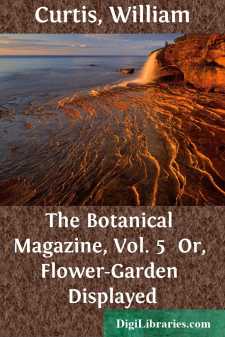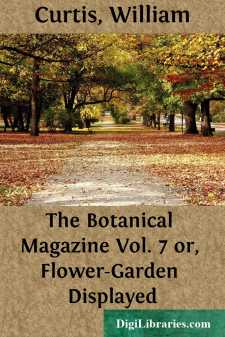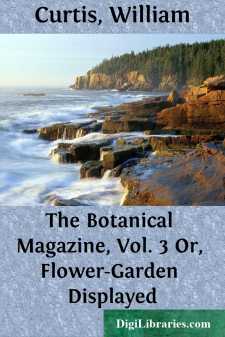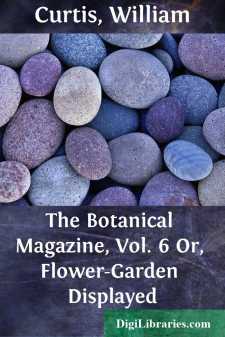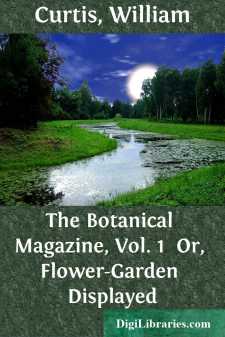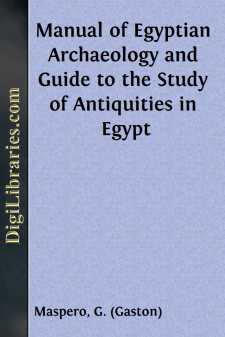Categories
- Antiques & Collectibles 13
- Architecture 36
- Art 48
- Bibles 22
- Biography & Autobiography 813
- Body, Mind & Spirit 142
- Business & Economics 28
- Children's Books 12
- Children's Fiction 9
- Computers 4
- Cooking 94
- Crafts & Hobbies 4
- Drama 346
- Education 46
- Family & Relationships 57
- Fiction 11828
- Games 19
- Gardening 17
- Health & Fitness 34
- History 1377
- House & Home 1
- Humor 147
- Juvenile Fiction 1873
- Juvenile Nonfiction 202
- Language Arts & Disciplines 88
- Law 16
- Literary Collections 686
- Literary Criticism 179
- Mathematics 13
- Medical 41
- Music 40
- Nature 179
- Non-Classifiable 1768
- Performing Arts 7
- Periodicals 1453
- Philosophy 64
- Photography 2
- Poetry 896
- Political Science 203
- Psychology 42
- Reference 154
- Religion 513
- Science 126
- Self-Help 84
- Social Science 81
- Sports & Recreation 34
- Study Aids 3
- Technology & Engineering 59
- Transportation 23
- Travel 463
- True Crime 29
The Botanical Magazine, Vol. 5 Or, Flower-Garden Displayed
by: William Curtis
Categories:
Description:
Excerpt
[145]
Monarda Fistulosa, var. Crimson Monarda
Class and Order.
Diandra Monogynia.
Generic Character.
Corolla inæqualis: labio superiore lineari filamenta involvente. Semina 4.
Specific Character and Synonyms.
MONARDA fistulosa capitulis terminalibus, caule obtusangulo. Linn. Syst. Vegetab. p. 68. ed. 14. Murr. Hort. Kew. v. 1. p. 36.
ORIGANUM fistulosum Canadense. Corn. Canad. 13. t. 14.
N145.
The Monarda fistulosa, a hardy herbaceous plant, growing spontaneously in Canada, and other parts of North-America, has long been cultivated in the English gardens, to which it recommends itself as much by the fragrance of its foliage, as the beauty of its flowers; of this species the plant here figured is an uncommonly beautiful variety, its blossoms far surpassing those of the original in size, as well as brilliancy of colour, the floral leaves also are highly coloured; we have represented a single blossom of the common Monarda fistulosa, that the difference of the two may be rendered obvious.
This variety has been very lately introduced from Holland, by Messrs. Grimwood and Co. Kensington; it flowers from June to September, and is propagated by parting its roots in spring or autumn.
Hypericum Calycinum. Large-Flower'd St. John's-Wort.
Class and Order.
Polyadelphia Polyandria.
Generic Character.
Calyx 5-partitus. Petala 5. Filamenta multa, in 5 phalanges basi connata. Capsula.
Specific Character and Synonyms.
HYPERICUM calycinum floribus pentagynis solitariis terminalibus, caule tetragono fruticoso, foliis oblongo-ovatis coriaceis. Linn. Syst. Vegetab. p. 700. Mant. 106. Hort. Kew. v. 3. 103.
ASCYRUM magno flore. Bauh. Pin. 280. Prodr. 130.
ANDROSÆMUM Constantinopolitanum flore maximo. Wheler's Journey into Greece, p. 205. cum fig.
N146.
This species of St. John's-Wort, particularly distinguished by the largeness of its flowers, has very generally been considered as the Ascyron of Linnæus, owing to his giving to that plant the synonyms which properly belong to the present one: in his Mantissa, this species is called calycinum, which name is adopted in the 14th edition of the Systema Vegetabilium, and also in the Hortus Kewensis, where the proper synonyms are applied to it, and from which we learn, that it is a native of the country near Constantinople, and was introduced into this country by Sir George Wheler, Bart. in 1676.
It is a hardy perennial, increasing much by its roots, which are of the creeping kind, and by parting of which in the autumn it is most readily propagated; like the periwinkle, it is a plant well adapted to cover a bank, or bare, spots under trees, where other plants will not thrive.
It flowers from July to September.
[147]
Dais Cotinifolia. Cotinus-Leav'd Dais.
Class and Order.
Decandria Monogynia.
Generic Character.
Involucrum 4-phyllum. Cor. 4 s. 5-fida. Bacca 1-sperma.
Specific Character and Synonyms.
DAIS cotinifolia floribus quinquefidis decandris. Linn. Syst. Vegetab. ed. 14. Murr. p. 403. Spec. Pl. p. 556.
DAIS laurifolia....


